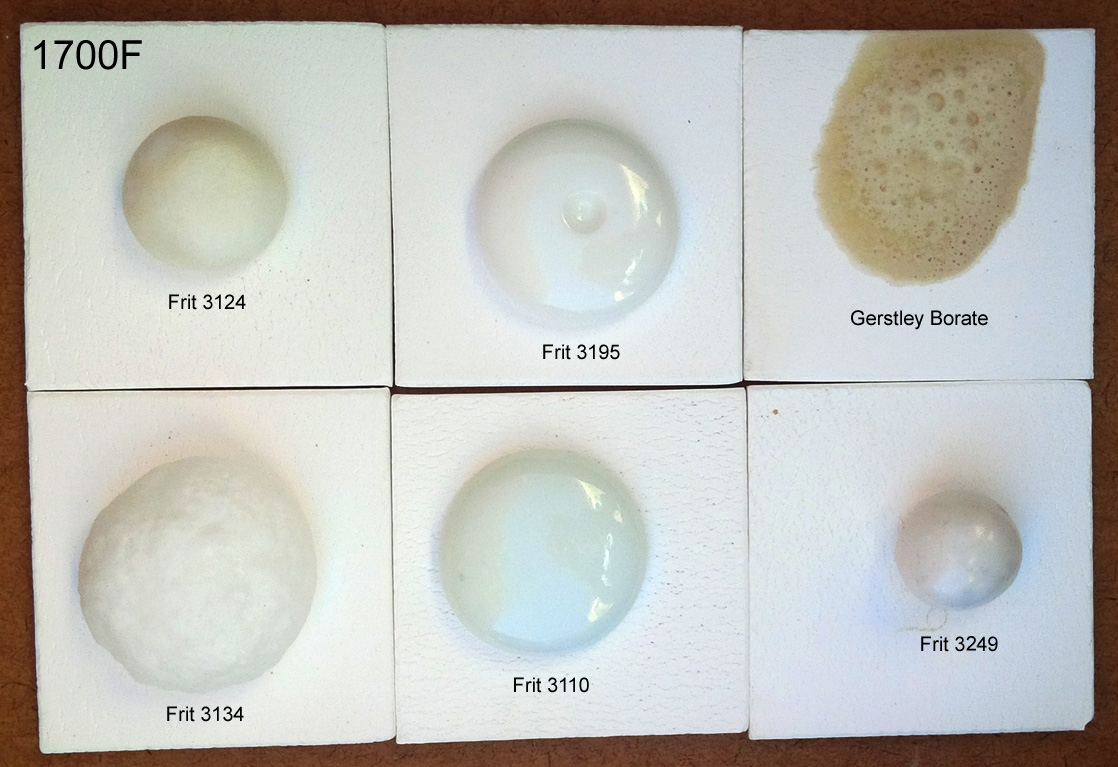| Monthly Tech-Tip | No tracking! No ads! | |
What has this low fire transparent glaze turned blue?
It is made from 85% Ferro Frit 3134, 7.5% kaolin and 7.5% silica. While not obvious from the recipe, one look at the chemistry of this (as displayed when you enter a recipe into your account at insight-live.com) will show very low Al2O3. Frit 3134 has almost no Al2O3, yet it is an essential component of functional glazes (for durability, resistance to crystallization, stability during firing). The kaolin is the only contributor of Al2O3 and there is only a little. A simple fix would be to use Ferro Frit 3124 instead, remove the silica and increase the kaolin to 15.
Related Pictures
These common Ferro frits have distinct uses in traditional ceramics

This picture has its own page with more detail, click here to see it.
I used Veegum to form 10 gram GBMF test balls and fired them at cone 08 (1700F). Frits melt really well, they do have an LOI like raw materials. These contain boron (B2O3), it is a low expansion super-melter that raw materials don’t have. Frit 3124 (glossy) and 3195 (silky matte) are balanced-chemistry bases (just add 10-15% kaolin for a cone 04 glaze, or more silica+kaolin to go higher). Consider Frit 3110 a man-made low-Al2O3 super feldspar. Its high-sodium makes it high thermal expansion. It works really well in bodies and is great to make glazes that craze. The high-MgO Frit 3249 (made for the abrasives industry) has a very-low expansion, it is great for fixing crazing glazes. Frit 3134 is similar to 3124 but without Al2O3. Use it where the glaze does not need more Al2O3 (e.g. already has enough clay). It is no accident that these are used by potters in North America, they complement each other well (equivalents are made around the world by others). The Gerstley Borate is a natural source of boron (with issues frits do not have).
Videos
Links
| Glossary |
Boron Blue
Boron blue is a glaze fault involving the crystallization of calcium borate. It can be solved using glaze chemistry. |
Got a Question?
Buy me a coffee and we can talk

https://digitalfire.com, All Rights Reserved
Privacy Policy

